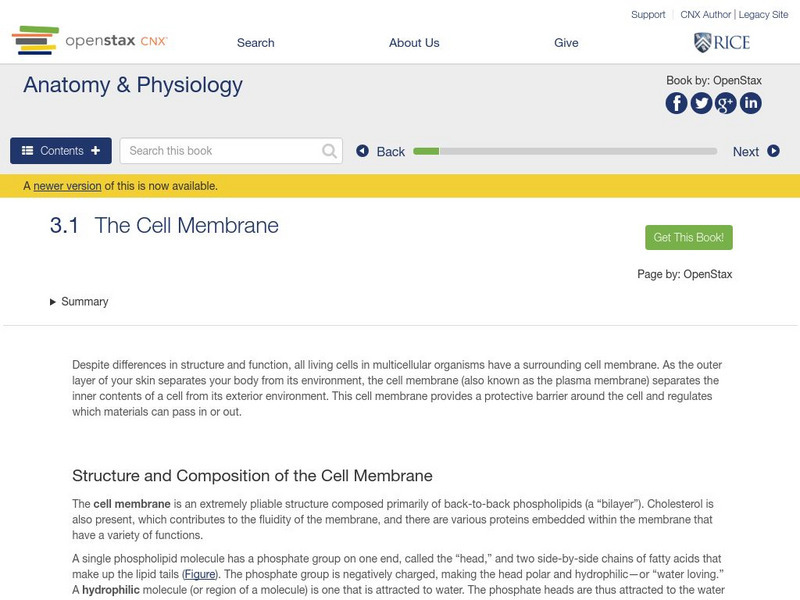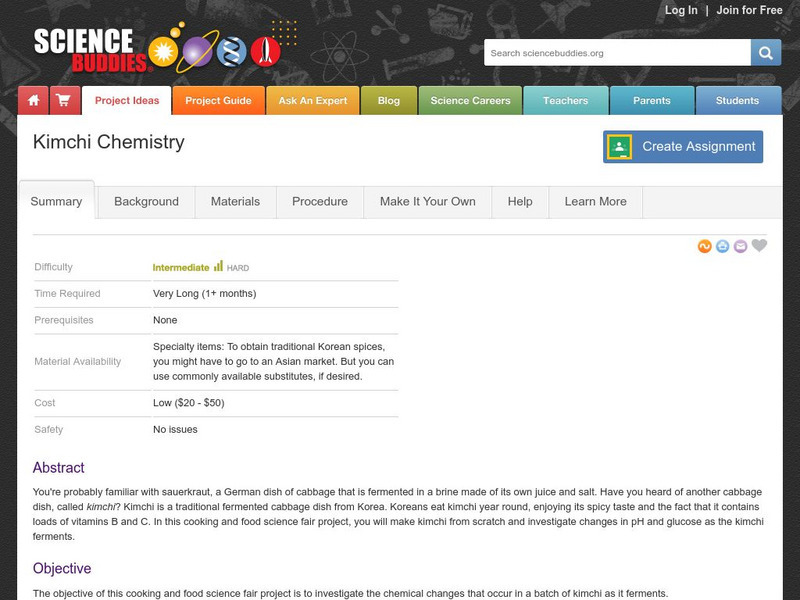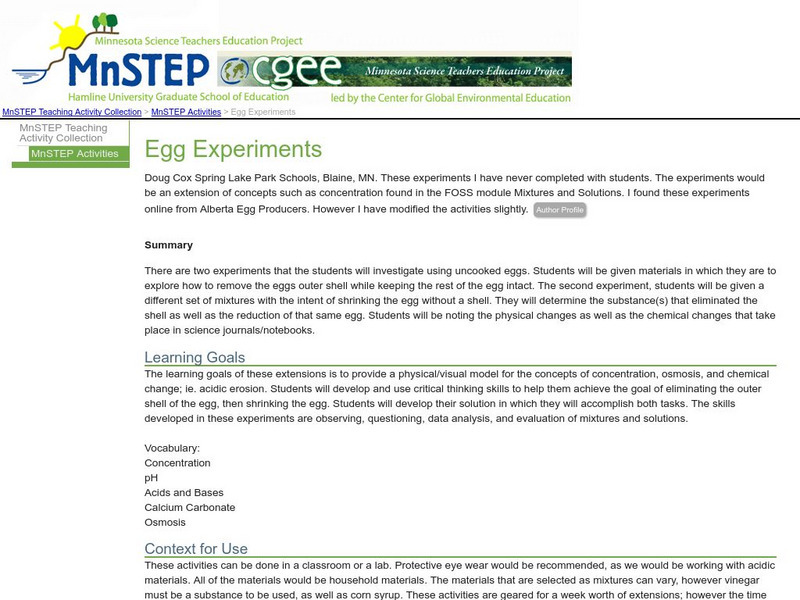Georgia Department of Education
Ga Virtual Learning: Anatomy and Physiology: Cells
In this module, students discover how each cell is organized to complete the function of producing and transporting proteins, and how cells relate to homeostasis of the body.
OpenStax
Open Stax: The Cell Membrane
Learn here about the structure and function of the cell membrane.
OpenStax
Open Stax: Anatomy and Physiology: Tubular Reabsorption
Lists specific transport mechanisms occurring in different parts of the nephron, including active transport, osmosis, facilitated diffusion, and passive electrochemical gradients.
TeachEngineering
Teach Engineering: Active and Passive Transport: Red Rover Send Particles Over
Students compare and contrast passive and active transport by playing a game to model this phenomenon. Movement through cell membranes is also modeled, as well as the structure and movement typical of the fluid mosaic model of the cell...
TeachEngineering
Teach Engineering: Cell Membrane Structure and Function
Students learn about the different structures that comprise cell membranes, fulfilling part of the Research and Revise stages of the legacy cycle. Students view online animations of cell membrane dynamics (links provided). Then they...
NASA
Nasa: Exploration: Then and Now: Follow the Water Lesson
The objective of this lesson is for students to learn the location of water and the importance of water to life. Students will learn about osmosis, soil samples, salinity, and more.
Science Buddies
Science Buddies: Project Ideas: Kimchi Chemistry
In this cooking and food science fair project, the student will make a batch of kimchi, the national dish of Korea, and investigate the changes in pH and glucose concentration as it ferments. The Science Buddies project ideas are set up...
Department of Defense
Do Dea: Biology: Unit 3: Cell Structure
In this third unit of a Biology course, students learn about cells and cell structure. They compare prokaryotic and eukaryotic cells and learn about the specialized structures in a cell and what their functions are. They will also learn...
The Association of the British Pharmaceutical Industry
Abpi: Homeostasis: Kidneys and Water Balance
A complete, self-paced lesson on homeostasis in the human body, focusing on kidney function. Students work their way through illustrated and animated tutorials, and answer review questions along the way. There is a self-checking quiz at...
Biology Pages
Kimball's Biology Pages: Transport Across Cell Membranes
This site has information on how facilitated diffusion of ions takes place through proteins, or assemblies of proteins, embedded in the plasma membrane. Includes a helpful diagram.
City University of New York
Brooklyn College: Osmosis Interactive Activity
Great activity with clear background information. Try out the lab using osmosis to calculate molecular weight.
City University of New York
The World of Cells: Osmosis
This definition and explanation osmosis shows how water diffuses from regions where it is in high concentration to regions where it is in low concentration.
McGraw Hill
Mc Graw Hill: Temperature, Osmotic Regulation and the Urinary System Postest
Answer these seven multiple choice questions about osmotic regulation in the Urinary system.
McGraw Hill
Mc Graw Hill: Temperature, Osmotic Regulation and the Urinary System Pretest
Answer these seven questions about osmotic regulation in the Urinary system. After hitting submit, review the concepts tested.
Science Education Resource Center at Carleton College
Serc: Egg Experiments
Two experiments where students investigate with uncooked eggs. In the first investigation, they explore how to remove the eggs outer shell while keeping the rest of the egg intact. In the second, students attempt to shrink the egg...
Estrella Mountain Community College
Online Biology Book: Transport in and Out of Cells
This resource is an article about the cell membrane, and its role in water and solute movement in and out of the cell.
Open Curriculum
Open Curriculum: Cell Transport and Homeostasis
Students will be able to identify two ways that molecules and ions cross the plasma membrane.
Other
Reverse Osmosis and Osmotic Pressure What They Are
This site gives a good explanation of osmosis and reverse osmosis. Also includes a scientific diagram of the process.
Other
Energy of Seawater Desalination
This site gives information about energy needed for desalination. It gives formulas on how to determine these figures.
McGraw Hill
Glencoe Biology: Cellular Transport: Self Check Quiz
Answer five multiple-choice quiz questions about the different types of cellular transport.
Concord Consortium
Concord Consortium: Molecular Workbench: Osmotic Pressure
View this simulation to observe the process of smaller particles moving through a semipermeable membrane. Temperature is adjustable. [Must download the simulation to engage in the activity]
Biology 4 kids
Biology4 Kids: Passive Transport Taking the Easy Road
This quick reference page explains the different types of passive transport in cells.
What2Learn
What2 Learn: Cell Transport Gcse Biology Revision
Two learning games, created by visitors to What2Learn, provide a fun way to learn how cells transport molecules.
Exploratorium
Exploratorium: Science Snacks: Bubble Suspension
Explore the principles of buoyancy and semipermeability in this activity by using bubbles and dry ice.

























